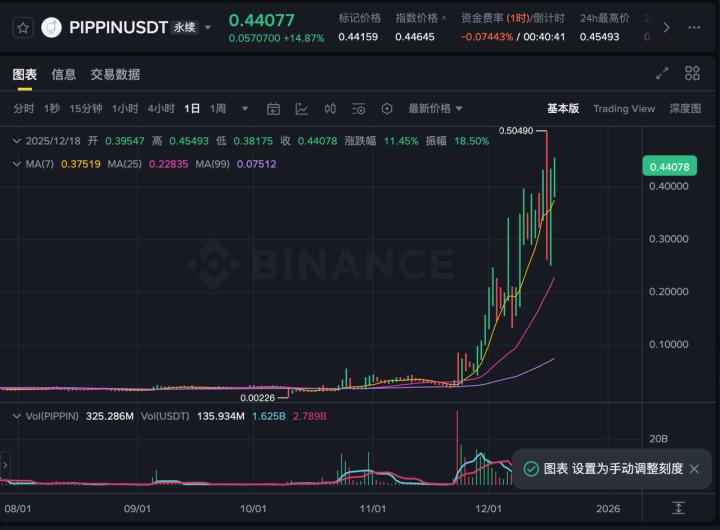This article is excerpted from the introduction of "The Satoshi Nakamoto Collection", tracing how the United States eroded the foundations of freedom through the centralization of monetary, legal, and state power in the 20th century, and reshaped the global financial order.
In the early 20th century, the United States initiated a process of power centralization, replacing the core elements of traditional liberal spirit with a new federal authority. Participants of the Jekyll Island Conference in 1910 drafted the Federal Reserve Act, which was legislated and enacted in 1913, thereby establishing the Federal Reserve, the central bank of the United States. The Fed was given a dual mission: to suppress inflation and guarantee employment, with its core tools being monetary supply regulation and controlling monetary prices through federal fund interest rates. When the unprecedented financial crisis in 1929 evolved into the "Great Depression" economic disaster, the nascent Fed neither prevented nor mitigated the crisis, yet economists and political leaders concluded that "the state needs to strengthen economic control".
The subsequent authoritarian turn in the United States mirrored trajectories of multiple countries: in 1933, US President Franklin Delano Roosevelt signed Executive Order 6102, forcing all American citizens to surrender gold to the Treasury and suspend the dollar's gold convertibility - this asset seizure policy was identical to the actions of authoritarian leaders like Winston Churchill, Joseph Stalin, Benito Mussolini, and Adolf Hitler during the same period.
During the two world wars, US allies purchased American-made weapons with gold, enabling the United States to accumulate the world's largest gold reserves. Near the end of World War II, allies convened at the Bretton Woods Conference in New Hampshire to plan the post-war international monetary system framework. The conference established the dollar, convertible to gold, as the global reserve currency, while creating the International Monetary Fund and the World Bank. These transnational lending institutions' ostensible mission was to promote international trade balance and development, but their complex legacy included trapping dozens of poor countries in an inescapable debt slavery network.
Simultaneously, the post-war military-industrial complex rising in the US mainland maintained a normalized war preparedness state during peacetime and stimulated GDP growth through arms trade with allied countries. From the Korean War to military operations in Vietnam, Laos, Lebanon, Cambodia, Grenada, Libya, Panama - not to mention numerous concurrent secret operations and proxy wars - these normalized warfare actions, which were core pillars of US anti-communist foreign policy, inevitably required financial support. This practical need ultimately prompted the Nixon administration to terminate dollar-gold convertibility in 1971 and, years later, reach an informal agreement with the Saudi government: oil trade would be priced in dollars, with dollars flowing back into the US economy. This treaty-like petroleum dollar agreement was entirely secretly concluded by the administrative system, arguably to circumvent the congressional treaty approval procedure required by the constitution.
Today, the petroleum dollar system itself is disintegrating, with major global oil-producing countries progressively adopting alternative currencies for oil pricing. This is an inevitable response to US foreign policy after the Cold War - the country has consistently demanded unipolar hegemony to dominate international trade and military actions. Especially after the 2001 "9/11" terrorist attacks, which became a pretext for declaring an indefinite anti-terror war, spending trillions of dollars on overseas military operations, and militarily transforming or fragmenting originally stable countries. Most far-reaching is that by establishing the Northern Command and Department of Homeland Security, the US mainland has formally entered a militarized control state.
The militarization process of the US mainland - a phenomenon the founding fathers deeply despised - under the guise of counter-terrorism, thoroughly eliminated the last remnants of citizens' privacy rights through comprehensive implementation of anti-money laundering/know-your-customer mechanisms (AML/KYC). The roots of this trend can be traced back to the 1970s, long before the war on terror. In fact, the 1970s can be considered the decade when the "banker's revolution" fully matured and the American free experiment completely collapsed.
The Bank Secrecy Act passed by Congress in 1970 initiated this dark decade. The act required US financial institutions to record, according to Treasury interpretations, all financial transactions "highly valuable for criminal, tax, and regulatory investigations or litigation" and provide these records upon law enforcement request. Simultaneously, financial institutions must report any cross-border fund movements exceeding $5,000. The Treasury subsequently issued regulations requiring reporting of domestic transactions over $10,000 - a reporting threshold still in use today, despite conservative estimates suggesting the dollar's purchasing power has depreciated nearly 90% since 1970.
The Bank Secrecy Act unprecedented eroded the Fourth Amendment's protection against warrantless searches. Despite legal challenges, the Supreme Court's "third-party doctrine" established in the United States v. Miller case (1976) maintained the law's effectiveness: US citizens have no constitutional privacy expectation for records held by third-party institutions. This ruling sparked public outcry, prompting Congress to pass the Financial Privacy Act two years later (1978). However, the law established twenty major exceptions, further weakening privacy protection. The Foreign Intelligence Surveillance Act (FISA) passed the same year, claiming to curb federal intelligence agencies' abuse of power (a cautionary tale from the Nixon administration), actually legalized illegal surveillance by establishing a "kangaroo court" - the Foreign Intelligence Surveillance Court (FISC), a secret court capable of issuing confidential warrants for any government monitoring needs.
The Bank Secrecy Act (1970), United States v. Miller case (1976), Financial Privacy Act (1978), and Foreign Intelligence Surveillance Act (1978) collectively constitute the prototype of today's comprehensive US government surveillance system. These four legal measures killed the lifeblood of the American free spirit in an era before personal computers and the internet. Now they are used as justification for comprehensive collection and sharing of financial transaction data (and broader communication data) generated through software platforms and digital networks - the inescapable infrastructure of modern people. These laws also spawned at least eight federal laws expanding surveillance powers: Money Laundering Control Act (1986), Anti-Drug Abuse Act (1988), Annunzio-Wylie Anti-Money Laundering Act (1992), Money Laundering Suppression Act (1994), Money Laundering and Financial Crimes Strategy Act (1998), Patriot Act (2001), Intelligence Reform and Terrorism Prevention Act (2004), and the Foreign Intelligence Surveillance Act Amendment (2008) containing the notorious Section 702 - which even allows bypassing FISC oversight with authorization from the Attorney General and Director of National Intelligence.
Ultimately, these laws and judicial decisions gave birth to at least three intelligence agencies specifically collecting global financial transaction data: Financial Action Task Force (1989), Financial Crimes Enforcement Network (1990), and Treasury Intelligence and Analysis Office (2004). In short, within less than a generation, the US banking system centralized in the early 20th century has transformed into an extension of state police functions. The revolving door between Wall Street, the Federal Reserve, and the Treasury - the career path of elite classes circulating through these institutions - further accelerated the collusion flywheel between legislators, law enforcement, and capital controllers. This machine, initially built by the "banker's revolution" and later reinforced by the petrodollar system, continues to serve the elite class through informal coordination and official bailouts.
After the 2008 financial crisis, governments worldwide not only failed to correct these defects but, with few exceptions like Iceland, almost all countries chose to bail out bankers. During the 2020 COVID-19 pandemic, the banking sector and numerous industries were again bailed out. In the United States, these bailout programs were authorized, continued, and funded through comprehensive bills endorsed by bipartisan leaders, without debate.
The 1970s not only marked the convergence of banks with state machinery and the demise of financial privacy, but also established a precedent for "emergency state rule" - where the U.S. President acquires powers that the Constitution should have prohibited by declaring a national emergency. The National Emergencies Act (NEA) passed by Congress in 1976 ostensibly aimed to limit presidential emergency powers, but in reality, through procedural authorization and broad definitions, dramatically increased the frequency of presidential emergency declarations. After the Iran hostage crisis in 1979, President Carter signed Executive Order 12170 imposing sanctions on Iran, becoming the first president to use this law. The action simultaneously invoked the International Emergency Economic Powers Act (pa) of 1977 - which authorizes the president to freeze assets of any foreign entity deemed deemed an "unusual and extraordinary threat" and block transactions.
The combined effect of these two laws grants the U.S. President the unilateral power to prohibit and punish any global economic activity by simply declaring a national emergency. Since dollar transactions typically require passage through U.S.-controlled financial networks, and the dollar remains the world's primary accounting unit and sovereign reserve currency, these two U.S. domestic laws can punish individuals and organizations completely outside U.S. judicial jurisdiction. Ultimately, the executive branch of the U.S. government - the President and the Treasury Department responsible for executing financial sanction orders - can exercise a form of substantive rule over most of the global region.
Executive Order 12170 was just the beginning of U.S. presidential sanctions. Subsequently, executive orders became a routine means for presidents to bypass lengthy legislative procedures and quickly implement sanctions. The combination of the International Emergency Economic Powers Act and the National Emergencies Act has provided legal basis for nearly 70 emergency declarations, implementing over 15,000 sanctions. The U.S. has also manipulated the UN Council to pass multiple resofolutions entities and parties, implementing multilateral sanctions - member states must enforce them under Chapter Chapter Seven of the UN Charter. These UN sanctions sanctions lack due process, and sanctioned targets have never been convicted.
Sanction measures, being easy to implement and seemingly low-cost, have become a preferred punishment tool for U U.. politicians, with approximately one-third of global countries currently facing U.S. sanctions. Execution pressure has led the Treasury Department to experience record personnel losses and case backlogs, giving rise to aving the Treasury and private law/law firms/consultingancies: former officials leverage their understanding of the complex sanction systems and government connections to benefit benefit clients.
However, sanctions rarely destabilize target regimes: authorauthoritarian governments remain stable, while sanctioned democratic countries reinforce power by increasing defense expenditures. With so manyied,, it has instead prompted nations to form new geopolitical alliances and create alternative financial financial systems that bypass U U U.S. banking systems. systems. What sanctions truly bring is long-term poverty (if not economic collapse)itablyating decades of hatred towards the necessarily the U U.S. Even. "Sanctions sanctionsanctionsise" targeting specific industries or industries are also ineffineffective - their limited limited limited scope pressure cannot compel policymakers to change. In practice, they often produceizing effects: for well-prepared elites, travel bans and asset freezes are mere inconveniences, while arms embargoes and export restrictions cause colldamageateral beyond declared scope.
Since the 1970s, the fusion of bank-state power has contained a fundamental paradox: aforementioned laws ostensibly aimed to restrict power - the Bank SecActrestrbanks, the National Emergencies Act limits limits the president, Foreign Intelligence Surveillance Act controls intelligence agencies. However due, to fatal design flaws (attempting to achieve power-limitation goals within within federal law that should belong to the constitutional framework),), they ultimately backfired. When federal law supersedes the Constitution, the resulting legal/political/military environment has regressed to a state predating the the the Revolution: becomes the becomes the core political subject, individual rights are reconstructed as privileges, laws presume citizens guilty, and the state monopolizes absolute dominion over rights rights, money - signaling a deeply crisis-ridden political culture.







